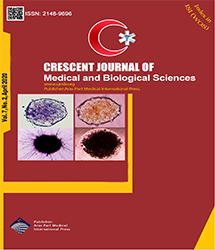| Original Article | |
| The Effectiveness of Dry Needling on Subjects With Multiple Myofascial Trigger Points in Shoulder Girdle Muscles | |
| Mehrdad Naghikhani1, Hamid Tayefi Nasrabadi2, Jafar Soleimanirad3, Mohammad Taghi Joghataei4, Amir Massoud Arablu5 | |
| 1Department of Anatomical Science, Faculty of Medicine Tabriz University of Medical Sciences, Tabriz, Iran 2Immunology Research Center, Tabriz University of Medical Sciences, Tabriz, Iran 3Stem Cell Research Center, Department of Anatomical Sciences, Faculty of Medicine, Tabriz University of Medical Sciences, Tabriz, Iran 4Cellular and Molecular Research Center, Department of Anatomical Sciences, Iran University of Medical Sciences, Tehran, Iran 5Department of Physical Therapy, the University of Social Welfare and Rehabilitation Sciences, Tehran, Iran |
|
|
CJMB 2020; 7: 285-290 Viewed : 7042 times Downloaded : 3867 times. Keywords : Myofascial trigger points, Dry needling, Pressure pain threshold, Pain, Muscle pain, Shoulder muscles |
|
| Full Text(PDF) | Related Articles | |
| Abstract | |
Objectives: Physiotherapists have accepted the dry needling (DN) technique as an adequate treatment for myofascial trigger points (MTrPs). Considering that most similar studies have only focused on one muscle, the current study aimed at evaluating the influence of DN on patients with musculoskeletal pains caused by active MTrPs in shoulder girdle muscles. Materials and Methods: This quasi-experimental study was achieved based on experiences and observations in clinical settings. Totally, 20 subjects were selected with pain in shoulders and/or upper limbs, as well as head and neck with 3 to 5 MTrPs in the shoulder girdle muscles. They were candidates for treatment with DN in 5 sessions every other day during 2 weeks. The subjects were evaluated by the visual analogue scale (VAS), pressure-pain threshold (PPT), and the disabilities of the arm, shoulder, and hand (DASH). The statistical analysis was done using the paired t test. Results: A significant difference was observed in VAS, DASH, and PPT results after the intervention compared with those values before the intervention. P≤0.05 was considered as the level of significance. Conclusions: Considering the observed improvements in VAS, the PPT, and DASH scores, the DN can be used as an impressive therapeutic method for MTrPs in shoulder girdle muscles. |
Cite By, Google Scholar
Google Scholar
PubMed
Online Submission System
 CJMB ENDNOTE ® Style
CJMB ENDNOTE ® Style
 Tutorials
Tutorials
 Publication Charge
Medical and Biological Research Center
About Journal
Publication Charge
Medical and Biological Research Center
About Journal
Aras Part Medical International Press Editor-in-Chief
Arash Khaki
Deputy Editor
Zafer Akan


















